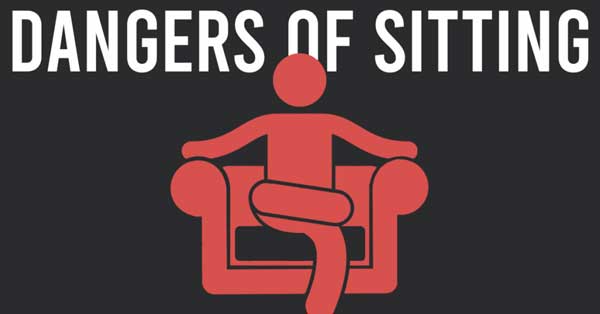Many of us spend prolonged periods of time sitting each day. With the cold Minnesota winters, many of us do not get outside as much as we do during the summer. Because of this many of the activities we are doing indoors involve sitting, particularly in the winter.
No matter the time of the year, it is important to recognize the dangers sitting can have on us at home and at work.
Damage Sitting Causes
The Mayo Clinic links sitting to a lengthy list of health risks including “increased blood pressure, high blood sugar, excess body fat around the waist and abnormal cholesterol levels — that make up metabolic syndrome.”
Consistent long term sitting can be particularly dangerous, with those who sit more than 8 hours a day with no other physical activity having a similar risk of death as those who were obese or smokers. This is also a great point for indicating the importance of regular exercise after work for those that have minimal physical activity at work.
Sitting can also cause joint and muscle pain – Harvard Health points out that sitting for extended periods “tighten the hip flexor and hamstring muscles and stiffen the joints themselves.” This tight and stiff feeling can result in back pain and a loss of balance.
Why Students are a Demographic at High Factor
In elementary school, many children have lengthy periods of sitting that are broken up only by the excitement of recess or gym class. Because of this children and teenagers often spend the majority of their school days sitting down.
Research has found that if students break up sessions of sitting by standing or moving around at least once an hour, their risks of these health complications decrease. This is good news for students in schools that require them to move from classroom to classroom for each class roughly every hour. However, most students, particularly those in elementary school, spend the majority of their day in one classroom.
What Can You Do About It?
The obvious solution to lowering your risk for these dangers is simply to sit less. This can be easier said than done as standing while working can be particularly difficult for some jobs. However, the Mayo Clinic still recommends you take breaks to stand every 30 minutes.
Standing up and stretching may be a more practical alternative to the common recommendation of using a standing or treadmill desk while at work. Though these desk systems can be costly, they might be worth investing in for your own home if you spend a lot of time using a computer. Many of these desks are adjustable and thus allow you to alternate between sitting and standing as you find comfortable.
Social norms may make it inappropriate for you to stand up or walk around during certain times of the day (like a long afternoon meeting). Control what you can control and make time for stretching and standing when you have the flexibility to do so.
Remember that you have control over how much time you spend sitting or standing at home, so use this time wisely and maintain a good balance.
As the weather begins to cool and we start to spend more time inside, keep these risks in mind as you try to find ways to stay active or standing.


